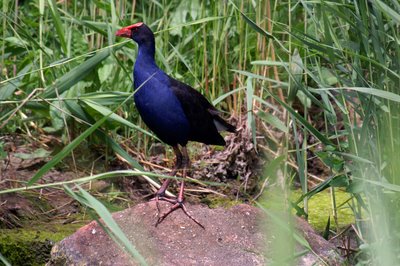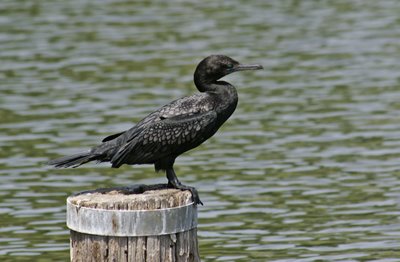Most of my wife's family live in Sydney, so every couple of years of so, we pay a visit, usually to coincide with a wedding or two! Although it's primarily a family holiday, there are many opportunities to get out to see some of Australia's fascinating wildlife, so I'll showcase a sample of what I got to see over the 19 day visit.
Although we've been to Australia 3 times as a family, we have, until this trip, only spent time in Sydney and the immediate surroundings. This time we had a week or so between family commitments in Sydney, so we took the opportunity (graciously enabled by the loan of a car by my wife's sister and husband) to travel up to Brisbane and spend a few days with some old friends.
Our first free day was today, so we went to a favourite haunt from previous trips - Olympic Park. It's a great place for kids to play, and there is also a superbly managed wetland, complete with a functioning tidal mangrove system, and a complex of brackish lagoons and lakes. There's a mangrove boardwalk and an education centre which offers a variety of hands-on learning experiences for kids and adults.
Many of the city's common birds can be seen well there - birds in general seem much tamer than in Asia.

Purple Swamphens are a common sight in almost any marshland. This race - 'melanotus' - is much darker than the birds we see in South-east Asia. Little Black Cormorant is another common wetland species. They have a beautiful deep ocean-green eye.
Little Black Cormorant is another common wetland species. They have a beautiful deep ocean-green eye.
A family of Australian Wood Ducks. The male is on the right. Magpie-Larks are everywhere! They have lots of other local names too. I heard them called 'Mud-lark' and 'Pee-wit'. This one, a female, is interested in the bread our kids were feeding the ducks.
Magpie-Larks are everywhere! They have lots of other local names too. I heard them called 'Mud-lark' and 'Pee-wit'. This one, a female, is interested in the bread our kids were feeding the ducks. A drake Chestnut Teal. These can look quite dark and dowdy in dull light, but the sun really makes them light up!
A drake Chestnut Teal. These can look quite dark and dowdy in dull light, but the sun really makes them light up! Royal Spoonbills are aptly named in my opinion - magnificently regal birds with one of the coolest hairstyles in bird-dom! This is one of a pair that frequented a quiet backwater in the park and spent much of their time displaying to each other, which meant the head-plumes were put to good use!
Royal Spoonbills are aptly named in my opinion - magnificently regal birds with one of the coolest hairstyles in bird-dom! This is one of a pair that frequented a quiet backwater in the park and spent much of their time displaying to each other, which meant the head-plumes were put to good use! Willy Wagtail is another ubiquitous urban garden bird. It's actually a kind of fantail rather than a wagtail, but its habit of swivelling its tail constantly from side to side suits the name.
Willy Wagtail is another ubiquitous urban garden bird. It's actually a kind of fantail rather than a wagtail, but its habit of swivelling its tail constantly from side to side suits the name. 
Fairy-Wrens are an Australasian speciality that I've always looked at in bird books and drooled over! Superb Blue Wren is the commonest of these occurring in the Sydney area, and the males really are superb! The song is amazingly like that of the Wren that occurs in Europe (Winter Wren), so, with that and the characteristic way the tail is often held cocked, its easy to see how the family name arose, even though they aren't closely related.




































